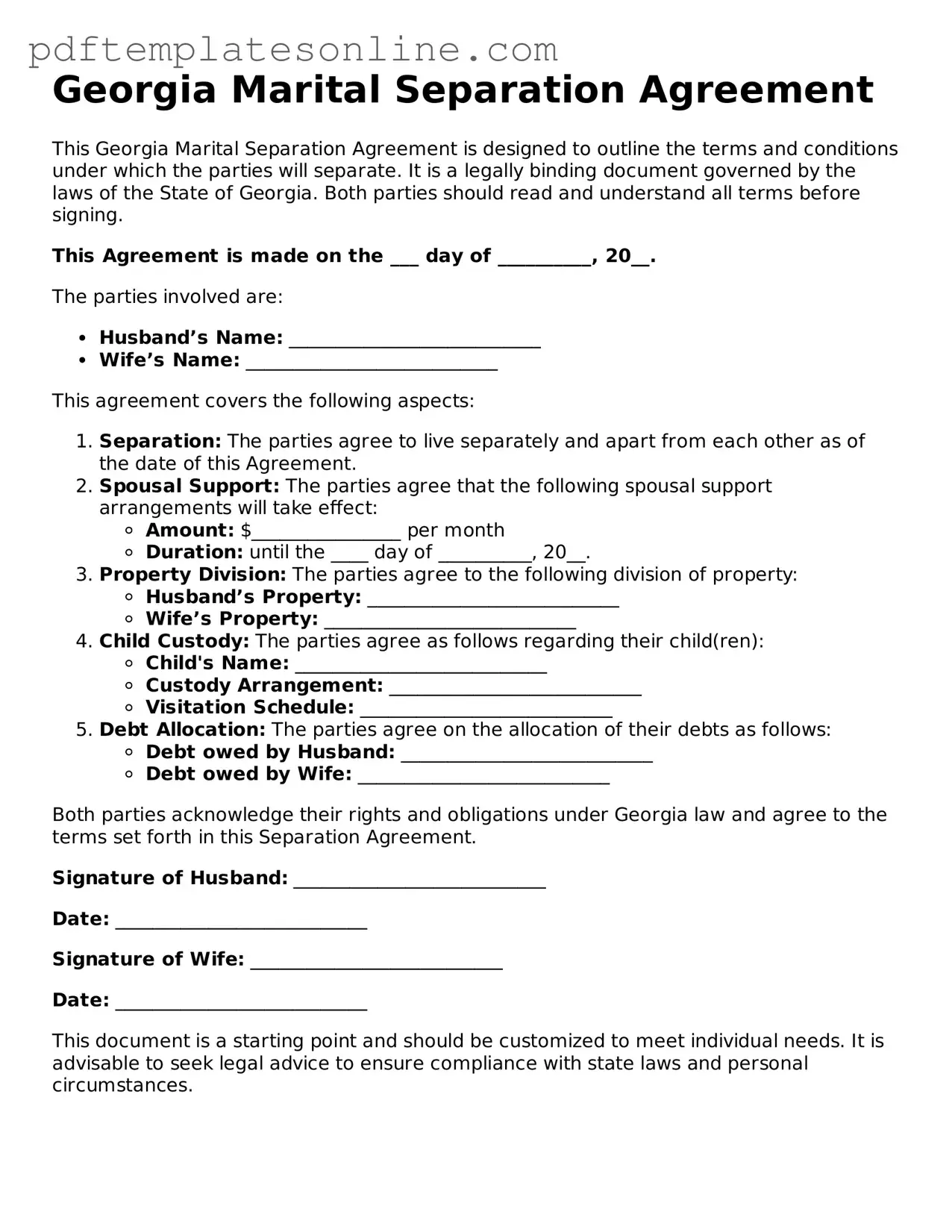Filling out the Georgia Marital Separation Agreement form can be a complex process. Many individuals make common mistakes that can lead to complications down the line. One significant error is failing to provide complete and accurate personal information. This includes not only names but also addresses and contact details. Omitting or incorrectly entering this information can cause delays in processing the agreement.
Another frequent mistake is not clearly outlining the terms of the separation. It’s essential to specify how assets and debts will be divided. Vague language can lead to misunderstandings and disputes later. Parties should take the time to detail every significant item, including property, bank accounts, and debts. Clarity is crucial in avoiding future conflicts.
People often overlook the importance of including child custody and support arrangements. If children are involved, the agreement should address their living arrangements, visitation rights, and financial responsibilities. Neglecting this aspect can result in legal issues that affect the children's well-being and the parents' relationship.
Another common error is failing to consider tax implications. Individuals may not realize how their separation can affect their tax situation. It’s wise to consult with a tax professional to understand the potential consequences of asset division and alimony. This knowledge can help in making informed decisions during the separation process.
Some individuals may rush through the signing process, neglecting to have the agreement notarized. In Georgia, having the document notarized can add an extra layer of authenticity and may be required for certain legal proceedings. Without proper notarization, the agreement may face challenges in court.
Lastly, people sometimes forget to keep copies of the signed agreement. After finalizing the document, it is crucial to retain copies for personal records and future reference. Losing track of the agreement can lead to confusion and disputes about the terms later on.
